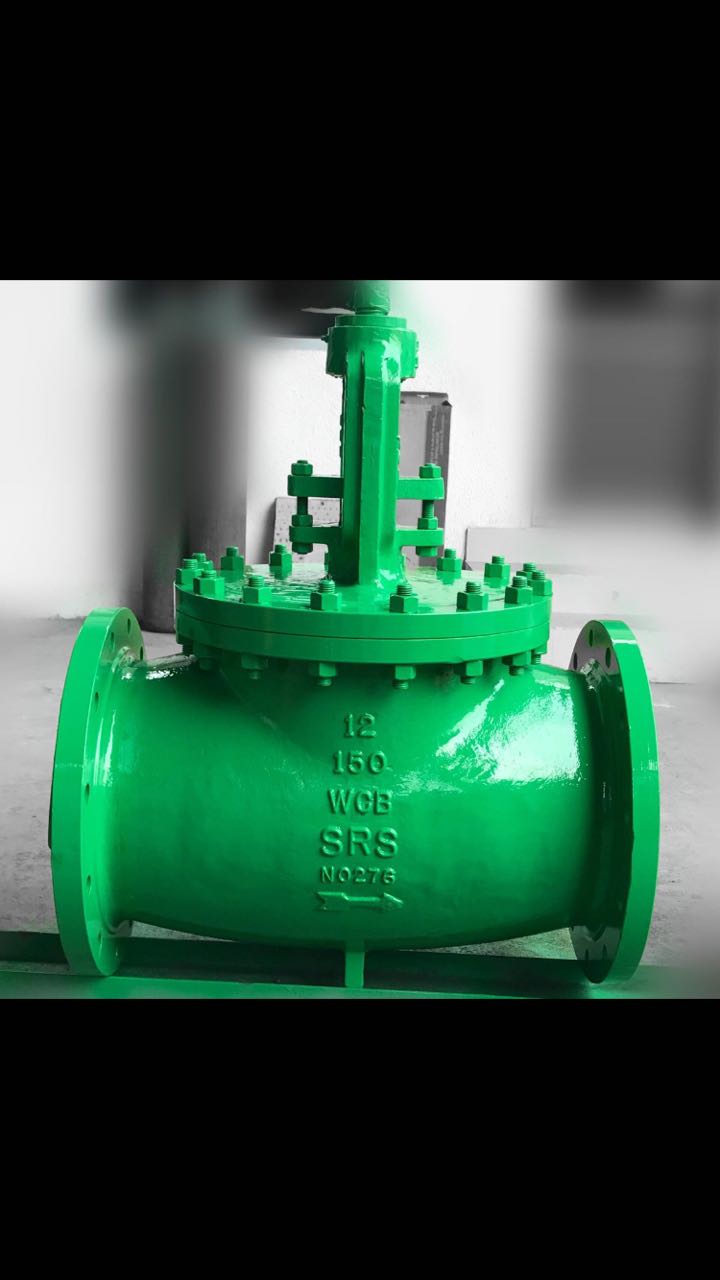Globe Valves Conventional globe valves may be used for isolation and throttling services. Although these valves exhibit slightly higher pressure drops than straight through valves (e.g., gate, plug, ball, etc.), they may be used where the pressure drop through the valve is not a controlling factor. Also, Y-pattern and angle-pattern, globe valves exhibit improved flow characteristics over the tee-pattern globe valve. Because the entire system pressure exerted on the disc is transferred to the valve stem, the practical size limit for these valves is NPS 12 (DN 300). Globe valves larger than NPS 12 (DN 300) are an exception rather than the rule. Larger valves would require that enormous forces be exerted on the stem to open or close the valve under pressure. Globe valves in sizes up to NPS 24 (DN 600) have been manufactured and used. Globe valves are extensively employed to control flow. The range of flow control, pressure drop, and duty must be considered in the design of the valve to avert premature failure and to assure satisfactory service. Valves subjected to high-differential pressure-throttling service require specially designed valve trim. Generally the maximum differential pressure across the valve disc should not exceed 20 percent of the maximum upstream pressure or 200 psi (1380 kPa), whichever is less. Valves with special trim may be designed for applications exceeding these differential pressure limits.
- Need Help? Talk to an Expert +91 93288 79000
- Send Message Us at srsvalves@gmail.com
Globe Valves
Globe Valves
Advantages of a Globe Valve
- Good Shutoff Capability
- Moderate To Good Throttling Capability
- Shorter Stroke (compared To A Gate Valve)
- Available In T, Y, And Angle Patterns, Each Offering Unique Capabilities
- Easy To Machine Or Resurface The Seats
- With Disc Not Attached To The Stem, Valve Can Be Used As A Stop-check Valve.
Disadvantages of Globe Valves
- Higher Pressure Drop (compared To A Gate Valve)
- Requires Greater Force Or A Larger Actuator To Seat The Valve (with Pressure Under The Seat)
- Throttling Flow Under The Seat And Shutoff Flow Over The Seat.
Features
- Impact Hand Wheel Supplied By Manufacturers Option Or On Customer Request
- Gland Eyebolts Are Mounted To Swing Aside To Facilitate Packing Maintenance
- Male & Female Bonnet Joints For Class 150 To Class 600 Valves , And Ring Joint For Class 900 & Above Valves Or As An Optional For Class 600 Valves On Customer Request
- Anti Blow Out Stem Design With Conical Backseat Surface To Permit Repacking Of Valve In The Fully Open Position
- Plug Seat Surface Is Standard Disc Design As Well As Spherical And Flat Seating Is Optional On Customer Request
- Seat Face With Satellite 6 Is Standard Design

Applications of Globe Valves
- Cooling Water Systems Where Flow Needs To Be Regulated
- Fuel Oil System Where Flow Is Regulated And Leak Tightness Is Of Importance
- High-point Vents And Low-point Drains When Leak Tightness And Safety Are Major Considerations
- Feed Water, Chemical Feed, Condenser Air Extraction, And Extraction Drain Systems
- Boiler Vents And Drains, Main Steam Vents And Drains, And Heater Drains
- Turbine Seals And Drains
- Turbine Lubes Oil System And Others
Reference Standard
- Globe Valve – BS 1873
- Wall Thickness & General Design < Nps24- API 600 , ISO 10434.
- Wall Thickness & General Design > Nps24- ASME B16.34
- Pressure Temperature Rating – ASME B16.34
- Face To Face Dimensions For Buttwelding And Flange Design- ASME B16.10
- Flange Design- ASME B16.5
- Buttewelding Design- ASME B16.25
- Materials – ASTM
- Valve Inspection And Testing – API 600, API 598, BS 6755 PART 1

